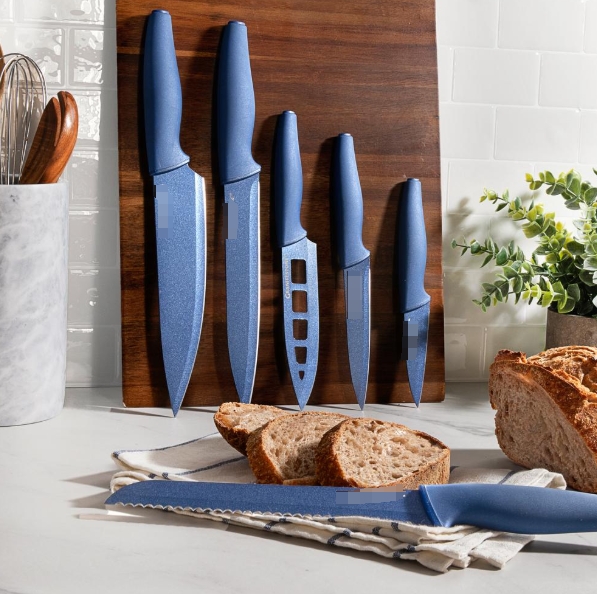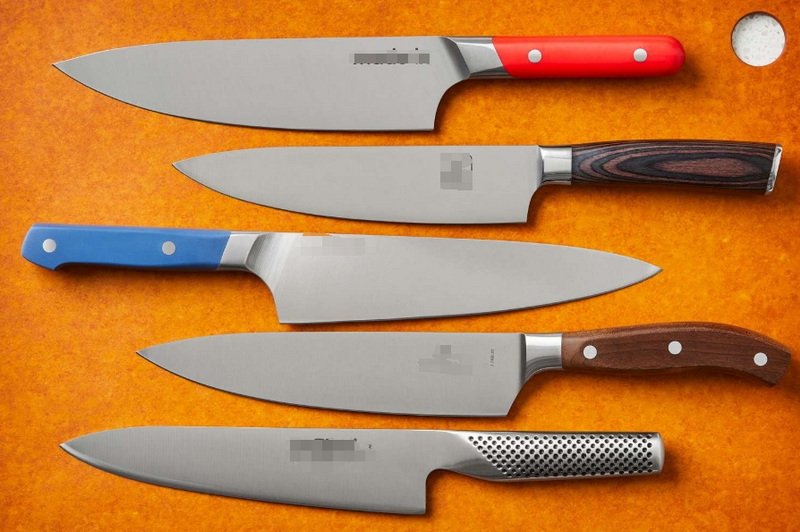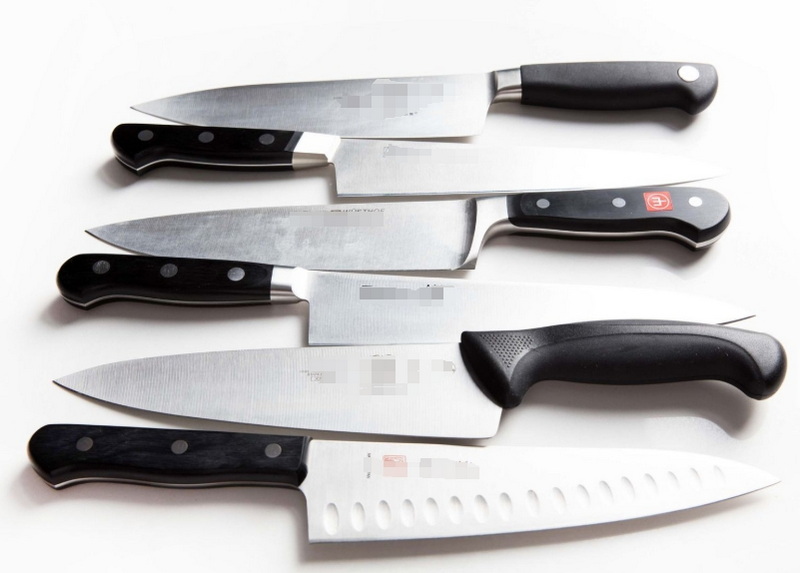

Views: 222 Author: Ella Publish Time: 2025-04-18 Origin: Site








Content Menu
● What Is a Utility Knife Collection?
● Key Differences: Knife Set vs Utility Knife Collection
● Practicality: Which One Is More Useful?
>> Knife Sets
● Visual Consistency and Aesthetics
● Expert Opinions and Real-World Scenarios
>> When a Knife Set Makes Sense
>> When a Utility Knife Collection Is Better
● FAQ
>> 1. What are the essential knives every kitchen should have?
>> 2. Are knife sets a waste of money?
>> 3. Is it better to buy knives individually?
>> 4. How should I store my knives?
>> 5. How often should I sharpen my knives?
Choosing the right knives for your kitchen is one of the most important decisions any home cook or professional chef will make. The debate often comes down to two main options: investing in a full knife set or curating a utility knife collection tailored to your needs. This comprehensive guide will explore both approaches, compare their practicality, and help you decide which is best for your kitchen.

Knives are the backbone of any kitchen. Whether you're dicing vegetables, carving meat, or slicing bread, the right knife makes all the difference. But with so many options on the market, should you buy a pre-packaged knife set or assemble your own collection of utility knives? Let's break down the pros, cons, and practicalities of each approach.
A knife set typically includes a selection of essential kitchen knives, often packaged with a storage block, honing steel, and sometimes kitchen shears. Common knives found in a set include:
- Chef's knife
- Paring knife
- Bread knife
- Utility knife
- Carving knife
- Steak knives
- Honing steel
- Kitchen shears
Typical Knife Set:
- Cost-effective compared to buying each knife individually[2][8].
- Convenient—no need to research and select each knife separately[2][9].
- Provides a complete, cohesive set for most kitchen tasks[2][5][9].
- Usually comes with a storage block or case for organization[2][11].
Cons:
- May include knives you rarely or never use, leading to wasted space and money[2][8][13].
- Takes up more counter or drawer space[2][12].
- Quality may be inconsistent across all knives in the set[8][9].
- Less flexibility to upgrade or customize[2][13].
A utility knife collection is a curated selection of individual knives chosen based on your specific cooking habits and preferences. Rather than buying a pre-packaged set, you handpick each knife, focusing on quality and utility.
Curated Utility Knife include:
- Chef's knife (the workhorse)
- Paring knife (for precision tasks)
- Serrated/bread knife (for bread and tomatoes)
- Utility knife (for in-between tasks)
- Specialty knives (only if needed)
Pros:
- Customizable—only buy what you need[2][8][13].
- Easier to focus on quality over quantity[8][13].
- Takes up less space[2][6].
- Easier to upgrade or replace individual knives over time[8].
Cons:
- Higher initial cost per knife[2][8].
- Takes more research and time to assemble the perfect collection[2][8].
- Lack of visual consistency if knives are from different brands[8][9].
- May require separate storage solutions[6].
| Feature | Knife Set | Utility Knife Collection |
|---|---|---|
| Cost | Lower per knife, higher upfront total | Higher per knife, but only buy what's needed |
| Convenience | Ready-made, easy to purchase | Requires research and selection |
| Customization | Limited | High |
| Storage | Usually includes block or case | May need to buy storage separately |
| Quality | Varies; some knives may be lower quality | Easier to focus on high-quality knives |
| Aesthetics | Uniform look | Mixed appearance unless carefully chosen |
| Upgradeability | Difficult | Easy to upgrade or replace knives |
Best for:
- Beginners setting up a new kitchen[2][9].
- Cooks who want everything in one purchase[2][9].
- Those who value matching aesthetics and organization[8][9].
Drawbacks:
- You may end up with knives you rarely use, such as a boning knife if you're vegetarian or steak knives if you don't serve meat[13].
- Takes up more space, which can be a problem in small kitchens[2][12].
Best for:
- Experienced cooks who know exactly which knives they use most[2][8].
- Small kitchens or minimalists who want to avoid clutter[2][6].
- Cooks who want to invest in higher-quality knives over time[8][13].
Drawbacks:
- Takes more time and effort to assemble[2][8].
- May lack a cohesive look if knives are from different brands[8][9].
Expert Tip: Most home cooks only use 4–5 knives regularly, regardless of the size of their knife set[6][10]. The essentials are usually a chef's knife, paring knife, bread knife, and utility knife[6][10][5].
- Knife Sets: Generally more cost-effective if you want a variety of knives, as buying each knife individually can add up[2][8].
- Utility Knife Collection: Higher initial cost per knife, but you only buy what you need, which can save money in the long run if you don't need specialty knives[2][8][13].
- Knife Sets: Usually come with a block or case, keeping knives organized and accessible[2][11].
- Utility Knife Collection: May require purchasing a magnetic strip, in-drawer organizer, or separate block[6][11].
Consider your kitchen space: Knife blocks take up counter space, while magnetic strips or in-drawer organizers can be more space-efficient for smaller kitchens[6][12].

- Knife Sets: Quality can vary; some sets include lower-quality knives to keep costs down[8][9]. The chef's knife in a set may be decent, but smaller or specialty knives are often less robust[4].
- Utility Knife Collection: Easier to focus on high-quality, specialized knives for your needs[8][13]. You can upgrade over time as your skills and budget grow.
- Knife Sets: Provide a uniform, matching look, which is appealing for many home cooks[8][9].
- Utility Knife Collection: May look mismatched unless you carefully select knives from the same brand or style[8][9].
- Knife Sets: All knives are usually made from the same material, making sharpening and maintenance easier[13].
- Utility Knife Collection: Different brands or materials may require different sharpening tools or techniques[13].
- New Homeowners: If you're starting from scratch, a comprehensive knife set gives you everything you need in one purchase[6].
- Entertainers: If you regularly host dinner parties, a set with steak knives and specialty knives can be practical[6].
- Uniform Aesthetic: If you want your knives to match, a set is the way to go[8][9].
- Minimalists: If you only use a few knives, buying individually saves space and money[2][6][13].
- Experienced Cooks: If you know your preferences, you can invest in higher-quality knives for the tasks you perform most[2][8].
- Small Kitchens: If counter space is at a premium, a curated collection with efficient storage is ideal[2][6].
- If you are a beginner, outfitting a new kitchen, or value convenience and aesthetics, a knife set is often more practical. It provides all the basics and more, usually at a lower per-knife cost, and keeps your kitchen organized[2][8][9].
- If you are an experienced cook, have limited space, or want to invest in high-quality knives tailored to your cooking style, a utility knife collection is more practical. You'll avoid clutter, focus on quality, and only pay for the knives you truly use[2][6][8][13].
Ultimately, the most practical choice depends on your cooking habits, kitchen space, and personal preferences. Most home cooks will find that a small collection of high-quality knives—a chef's knife, paring knife, bread knife, and utility knife—covers 95% of kitchen tasks[6][10][4]. Consider starting with these essentials and expanding only as your needs grow.

Most experts agree that the essentials are:
- Chef's knife (for most chopping and slicing)
- Paring knife (for precision and small tasks)
- Bread knife (for bread, tomatoes, and delicate foods)
- Utility knife (for in-between tasks)[5][6][10]
Not necessarily. Knife sets can be cost-effective and convenient, especially for beginners. However, many sets include knives you may rarely use, which can lead to wasted space and money if you don't need them[2][4][13].
Buying knives individually allows you to customize your collection, focus on quality, and avoid clutter. However, it can be more expensive and time-consuming to assemble the perfect set[2][8][13].
- Knife block: Convenient and safe, but takes up counter space[11][12].
- Magnetic strip: Space-saving and hygienic, but requires wall space[6].
- In-drawer organizer: Keeps knives out of sight and away from children, but uses drawer space[6].
It depends on usage, but most home cooks should hone their knives weekly and sharpen them every few months. If your knives are dull or not cutting smoothly, it's time to sharpen them[13].
[1] https://www.reddit.com/r/Cooking/comments/kv895k/knife_blocks_or_individual_knives/
[2] https://kuisinemall.com/blogs/news/kitchen-knife-sets-vs-individual-knives-which-option-is-best-for-your
[3] https://www.wusthof.com/knives-by-type
[4] https://www.youtube.com/watch?v=st6LggwoL_4
[5] https://www.curated.com/journal/2613001/an-expert-guide-to-knife-sets-how-to-find-the-best-knife-set-for-you
[6] https://kyokuknives.com/blogs/kyoku-chef-blog/how-to-choose-the-right-knife-block-set
[7] https://cookprimalgourmet.com/blog/knife-block-buying-guide/
[8] https://dfackto.com/blogs/news/chef-knife-or-individual-knife-which-is-better
[9] https://knife-depot.com/pages/the-complete-guide-to-buying-kitchen-knives
[10] https://www.knivesandtools.com/en/ct/buying-guide-knife-sets.htm
[11] https://dalstrong.com/blogs/news/everything-you-need-to-know-about-a-knife-block
[12] https://dalstrong.com/blogs/news/what-to-look-for-in-a-good-knife-set
[13] https://oishya.com/journal/is-it-better-to-buy-a-kitchen-knife-set-or-individual-knives/
[14] https://dalstrong.com/blogs/news/whats-in-a-professional-knife-set
[15] https://cooking.stackexchange.com/questions/28507/when-is-a-utility-knife-to-be-preferred-over-a-chefs-or-a-paring-knife
[16] https://kamikoto.com/blogs/fundamentals/understanding-kitchen-knives-types
[17] https://www.escoffier.edu/blog/culinary-arts/different-knives-and-the-best-uses-for-each/
[18] https://www.surlatable.com/products/knives/knives/top-12-knife-types/
[19] https://www.youtube.com/watch?v=8wgc7rv5WJc
[20] https://madeincookware.com/blogs/types-of-kitchen-knives
[21] https://www.tasteofhome.com/collection/best-kitchen-knife-sets/
[22] https://www.calphalon.com/cutlery/
[23] https://www.youtube.com/watch?v=QgVyN6Lpiuc
[24] https://www.redrootblades.com/blogs/writing/petty-paring-and-kitchen-utility-knives-whats-the-difference
[25] https://madeincookware.com/blogs/chef-knife-vs-utility-knife
[26] https://www.everythingkitchens.com/knife-education-guide.html
[27] https://www.youtube.com/watch?v=hxIandWOBJ4
[28] https://www.reddit.com/r/Cooking/comments/kv895k/knife_blocks_or_individual_knives/
[29] https://elementknife.com/pages/common-questions-about-kitchen-knives
[30] https://artisanrevere.com/blogs/education/knife-faq-and-problem-solving
[31] https://cookprimalgourmet.com/blog/knife-block-buying-guide/
[32] https://www.thebambooguy.com/blogs/kitchen-knives/frequently-asked-questions-about-kitchen-knives
[33] https://www.reddit.com/r/knives/comments/x8pi22/were_doing_a_frequently_asked_questions_faq/
[34] https://www.mercerculinary.com/faqs/
[35] https://allaboutpocketknives.com/knife_forum/viewtopic.php?t=76719
[36] https://heinnie.com/blog/kitchen-knife-set/
What's the Difference Between a Chef Knife and a Kitchen Knife?
What's the Difference Between a Chef Knife and a Gyuto Knife?
What's the Difference Between an 8-Inch and 10-Inch Chef Knife?
What's the Difference Between Carbon Steel and Stainless Steel Chef Knives?
What's the Difference Between Western and Japanese Chef Knives?
Knife Set vs Utility Knife Collection: Which One Is More Practical?